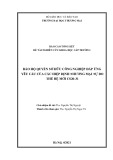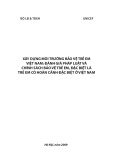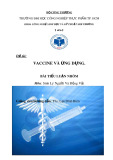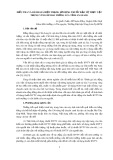
RESEARC H Open Access
Efficacy of Mesenchymal Stem Cells in
Suppression of Hepatocarcinorigenesis in Rats:
Possible Role of Wnt Signaling
Mohamed T Abdel aziz
1
, Mohamed F El Asmar
2
, Hazem M Atta
1
, Soheir Mahfouz
3
, Hanan H Fouad
1
,
Nagwa K Roshdy
1
, Laila A Rashed
1
, Dina Sabry
1
, Amira A Hassouna
1*
and Fatma M Taha
1
Abstract
Background: The present study was conducted to evaluate the tumor suppressive effects of bone marrow derived
mesenchymal stem cells (MSCs) in an experimental hepatocellular carcinoma (HCC) model in rats and to
investigate the possible role of Wnt signaling in hepato-carcinogenesis.
Methods: Ninety rats were included in the study and were divided equally into: Control group, rats which received
MSCs only, rats which received MSCs vehicle only, HCC group induced by diethylnitroseamine (DENA) and CCl
4
,
rats which received MSCs after HCC induction, rats which received MSCs before HCC induction. Histopathological
examination and gene expression of Wnt signaling target genes by real time, reverse transcription-polymerase
chain reaction (RT-PCR) in rat liver tissue, in addition to serum levels of ALT, AST and alpha fetoprotein were
performed in all groups.
Results: Histopathological examination of liver tissue from animals which received DENA-CCl
4
only, revealed the
presence of anaplastic carcinoma cells and macro-regenerative nodules type II with foci of large and small cell
dysplasia. Administration of MSCs into rats after induction of experimental HCC improved the histopathological
picture which showed minimal liver cell damage, reversible changes, areas of cell drop out filled with stem cells.
Gene expression in rat liver tissue demonstrated that MSCs downregulated b-catenin, proliferating cell nuclear
antigen (PCNA), cyclin D and survivin genes expression in liver tissues after HCC induction. Amelioration of the liver
status after administration of MSCs has been inferred by the significant decrease of ALT, AST and Alpha fetoprotein
serum levels. Administration of MSCs before HCC induction did not show any tumor suppressive or protective
effect.
Conclusions: Administration of MSCs in chemically induced HCC has tumor suppressive effects as evidenced by
down regulation of Wnt signaling target genes concerned with antiapoptosis, mitogenesis, cell proliferation and
cell cycle regulation, with subsequent amelioration of liver histopathological picture and liver function.
Background
Hepatocellular carcinoma (HCC) is a highly prevalent,
treatment-resistant malignancy with a multifaceted
molecular pathogenesis[1]. It is a significant worldwide
health problem with as many as 500,000 new cases diag-
nosed each year[2]. In Egypt, HCC is third among can-
cers in men with >8000 new cases predicted by 2012[3].
Current evidence indicates that during hepatocarcino-
genesis, two main pathogenic mechanisms prevail: cir-
rhosis associated with hepatic regeneration after tissue
damage and mutations occurring in oncogenes or tumor
suppressor genes. Both mechanisms have been linked
with alterations in several important cellular signaling
pathways. These pathways are of interest from a thera-
peutic perspective, because targeting them may help to
reverse, delay or prevent tumorigenesis[1]. In experi-
mental animals interferon-a(IFN-a) gene therapy exerts
significant protective effects, but more so when the gene
* Correspondence: amira_hassouna@yahoo.co.uk
1
Unit of Biochemistry and Molecular Biology (UBMB), Department of Medical
Biochemistry, Faculty of Medicine, Cairo University, Cairo, Egypt
Full list of author information is available at the end of the article
Abdel aziz et al.Journal of Experimental & Clinical Cancer Research 2011, 30:49
http://www.jeccr.com/content/30/1/49
© 2011 Abdel aziz et al; licensee BioMed Central Ltd. This is an Open Access article distributed under the terms of the Creative
Commons Attribution License (http://creativecommons.org/licenses/by/2.0), which permits unrestricted use, distribution, and
reproduction in any medium, provided the original work is properly cited.






























